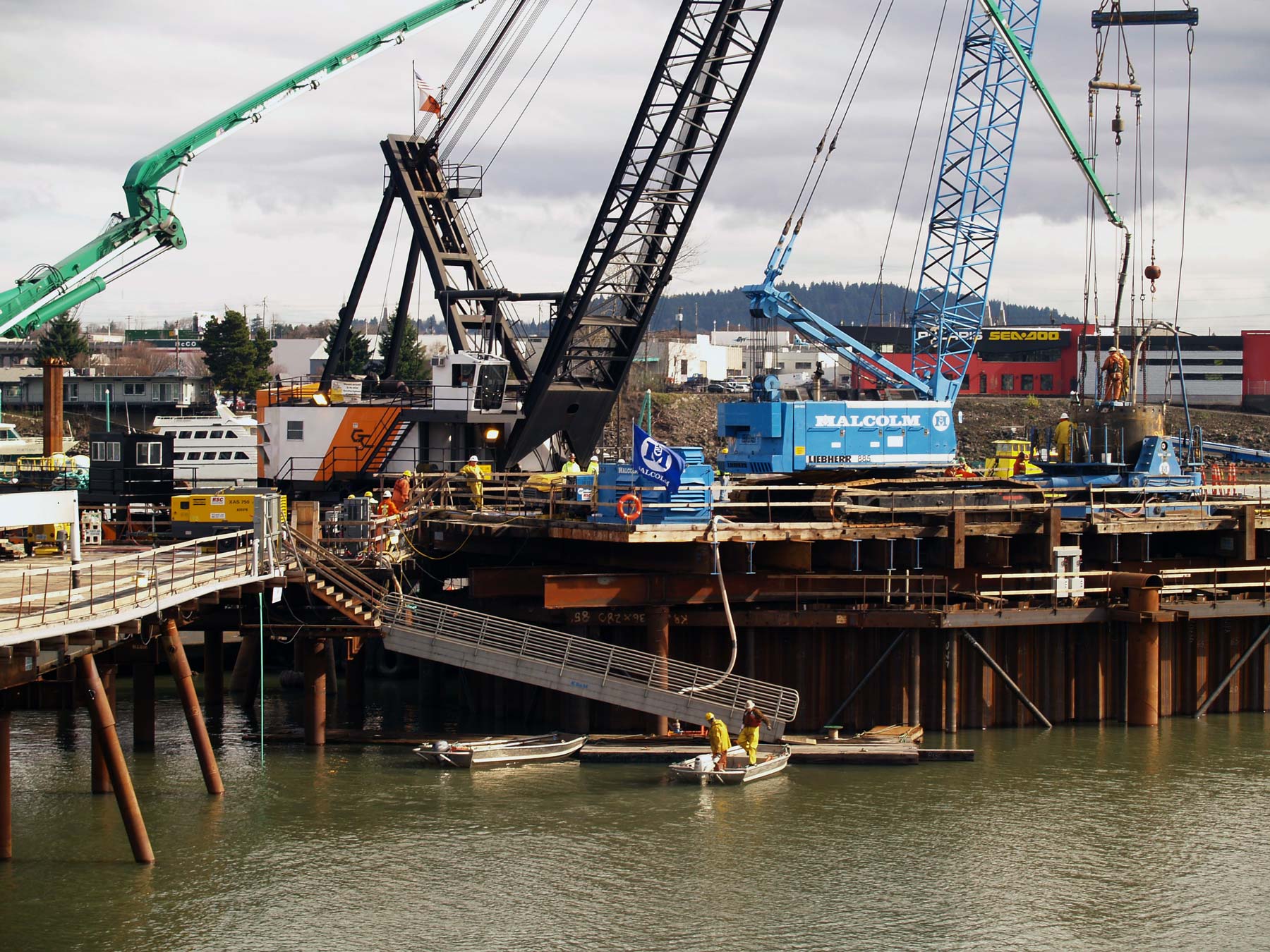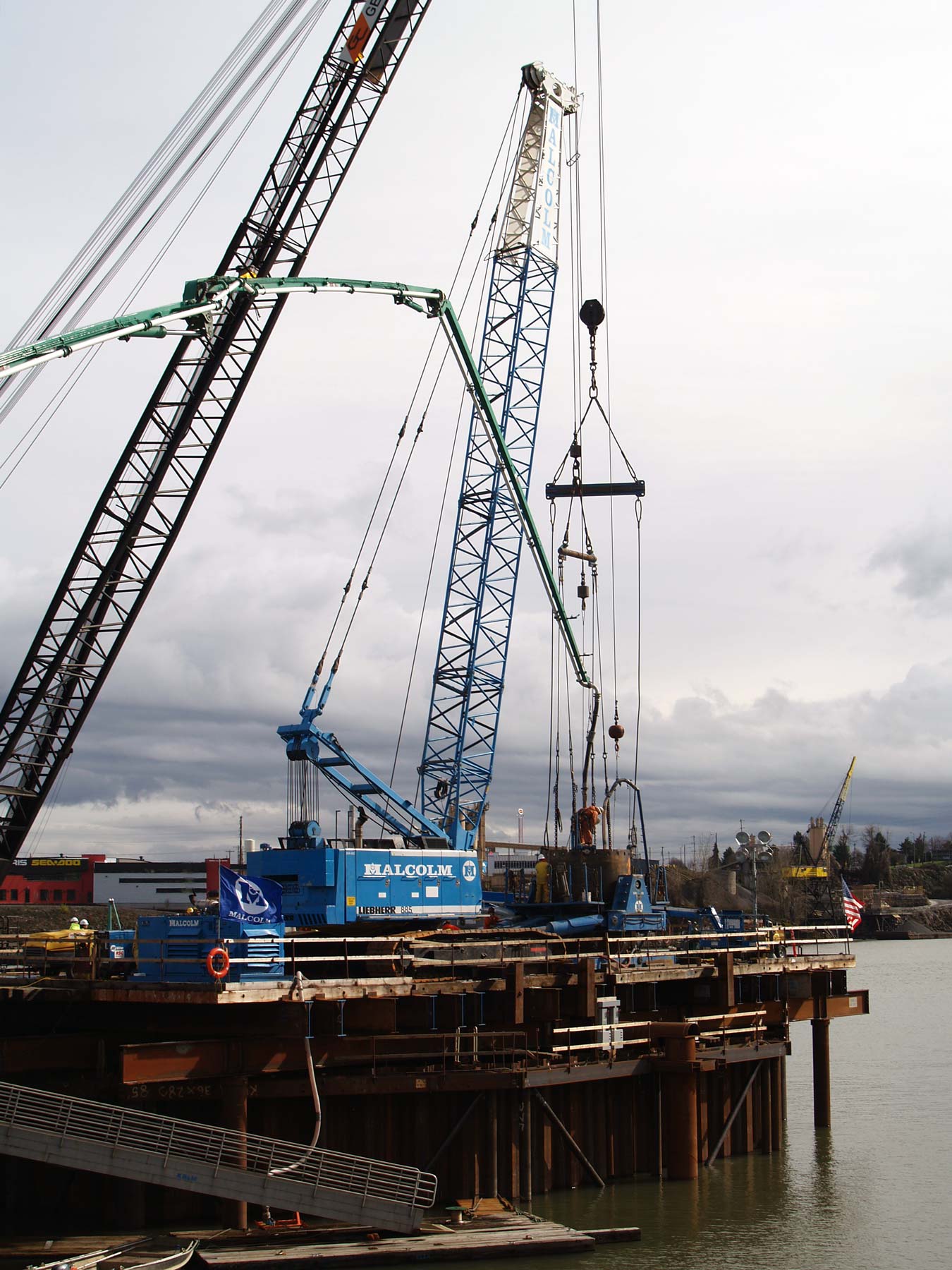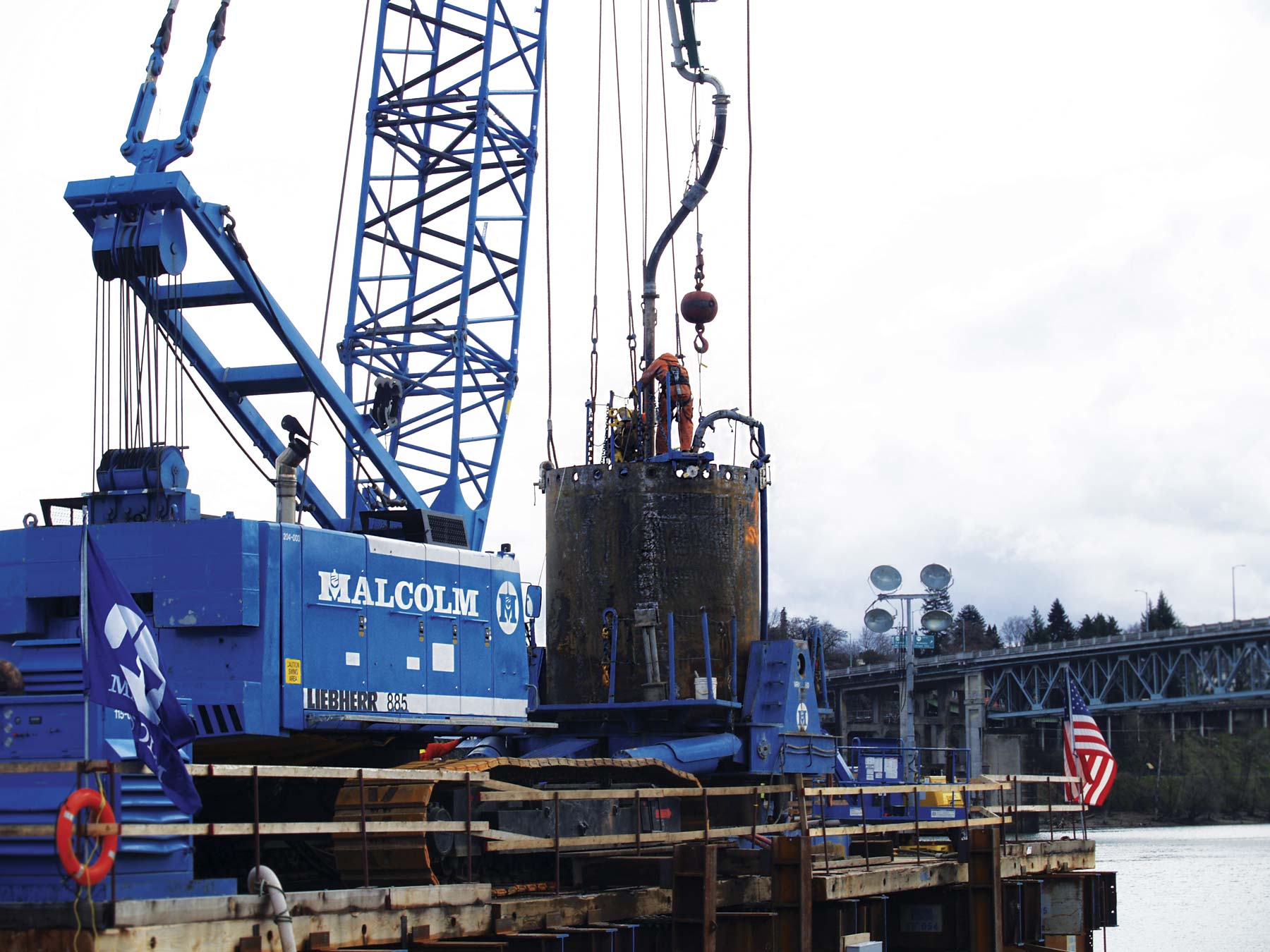Enhancing Transportation with Deep Foundations and Drilled Shafts
The Tilikum Crossing was more than just a bridge; it was a lifeline for the community. This structure was the answer to the city’s pressing transportation needs, facilitating seamless access to key destinations such as Portland State University, Oregon Health & Science University, the vibrant Central Eastside, and the Oregon Museum of Science and Industry. It was destined to be the bridge that lightened the heavy burden of traffic on other river crossings.
Commuters of bus lines 9-Powell Blvd and 17-Holgate/Broadway found their journeys transformed, with newfound efficiency reducing travel times and enhancing their daily lives. Cyclists and pedestrians, too, celebrated the bridge’s creation, gaining access to an extensive network of both existing and planned greenways and bike routes on both sides of the river. The Tilikum Crossing was a true bridge for the people, designed to enrich lives.
Malcolm Drilling was contracted for installing the bridge’s foundation system, which included drilled shafts and cased drilled shafts.
The bridge, boasting two towering main towers, stood proudly as a testament to engineering marvels. Its foundation system, a cluster of 10-foot diameter shafts connected to a pile cap, was meticulously designed to bear the loads of the cable stay bridge.
The construction of the bridge’s bents, two on the east side of the river and two on the west side of the river, each supported by two drilled shafts per bent. These shafts, excavated with standard oscillator methods, plunged deep into the earth to impressive depths of 120 feet.
The river’s two tower foundations consisted of eight drilled shafts, each boasting a diameter of 10 feet and depths reaching a remarkable 165 feet. The work was performed with precision from temporary platforms, thoughtfully erected by the general contractor to accommodate the oscillators and excavation cranes. The remaining equipment made its journey via barge.
To ensure that the project met the highest standards, two full-scale load tests were meticulously conducted. One on each tower, confirming that the shafts were well-prepared for the challenges that lay ahead, and that all design criteria were met.
As the project delved into the earth, it discovered a varied narrative of subsurface soils, categorized into five general geologic units. Each unit presented its unique set of challenges, and amidst these intricacies, the team faced a common theme throughout the project: high groundwater tables
Quality, at Malcolm Drilling, was non-negotiable. Two Osterberg Load Cell tests were carried out with precision to guarantee the integrity of the installation techniques and design assumptions. The team took great care in crafting the concrete mix, with an emphasis on workability and its retention throughout the tremie concrete placement operation
The shafts’ integrity remained of paramount importance, and Malcolm Drilling employed Crosshole Sonic Logging (CSL) test methods to maintain the highest standards. Their journey was marked by challenges, but their commitment to excellence ensured that the Tilikum Crossing would stand as a symbol of engineering brilliance for generations to come.




